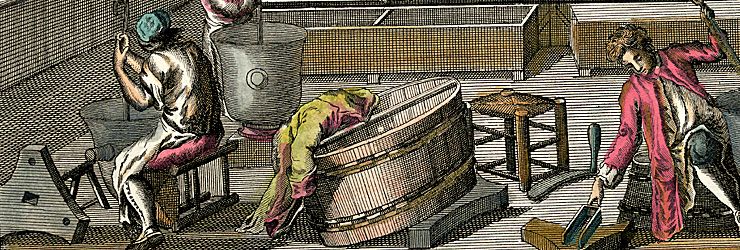
Historical events
Dyers’ art, important activity connected to the ancient process of fabrics production, was one of the numerous active medieval guilds in Florence since the XIII century.
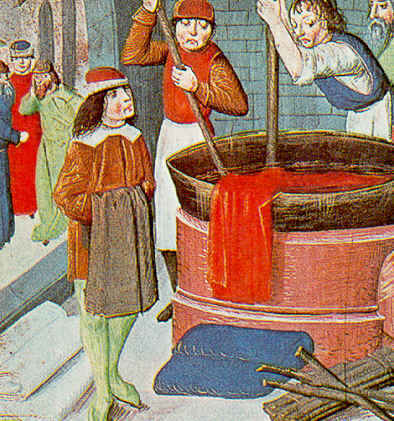
Textile activity reached nevertheless the maximum splendour during the first years of the XIV century because of the rapid growth of demand on all continental markets and of the improvement and rationalization of technological procedures and of the development of commercial organization.
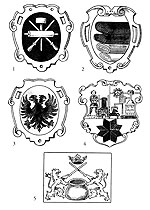
In Florence, but also in other Italian and European cities, it was primarily a city industry able to give to a good part of the population to live, from its greater exponents, “wool workers“, to shop Masters, up to the class of employees, “factors”, who were specialized workers, and to apprentices and “ciompi”.
Activity also became the support, even though indirectly, of a series of other jobs and initiatives among which cloth producers, conveyors of raw materials, builders of job tools, textile and dyestuff dealers, and so on.
Obviously the Wool Art, able to involve a so wide part of the Florentine economy, quickly assumed a so meaningful importance to identify itself with a wide part of the political power.
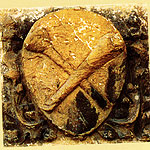 It was really inside this job organization that since the beginning Dyers Art had great relief. Its ability and competence were owed above all to variety, stability and brightness of dyes on fabrics that were produced inside a complex production cycle.
It was really inside this job organization that since the beginning Dyers Art had great relief. Its ability and competence were owed above all to variety, stability and brightness of dyes on fabrics that were produced inside a complex production cycle.
On this subject it is necessary to remember that in the Middle Ages it was very felt the need to show the own social condition through the exhibition of refined dresses realized with quality fabrics and gaudy coloured dyes that, for the most well-to-do classes, were also used for furnishing their own residence.
To the members of “Dyers’ Art” nevertheless, economically enslaved to the powerful ”Wool Art“, a really autonomous corporative recognition was denied, despite the continuous requests in such sense for the importance of their own role in the production cycle of fabrics.
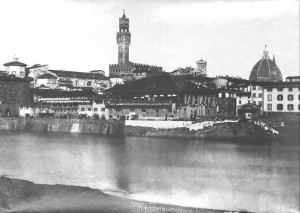
Only in 1378, after some revolts, the dyers succeeded in giving life to an autonomous corporative organization that nevertheless, only after four years, was dissolved for bringing back their members under the control of the well most powerful wool workers.
At the end of the ‘300, with the crisis of the wool production, the dyers had smaller importance in the city economy and had to adapt themselves to a new reality of market because forced to work with more economic materials and techniques in order to control the costs.
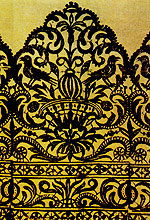
In the ‘400 finally, with the Silk Art, Dyers activity had a rebirth and a long period of technological development even if the textile commerce didn’t reach anymore the level that had, for almost two centuries, for the export of the wool.
In the brief period of its own corporative autonomy Dyers Art succeeded in erecting in Borgo Santa Croce a Hospital that was entitled to Sant’ Onofrio considered patron of the arts. The purpose of such initiative was that of welcoming the needy of cares members of the guild, their families, widows and orphans. A Church was attached to the hospital and it was enriched, according to the tradition, by frescos of Giotto School and by tables altar of great merit.
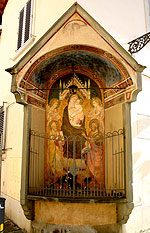 On the same road where the hospital “De’ Malcontenti” was built, on the corner of the present Casina street, Dyers left another interesting testimony: a stone tabernacle that contains a fresco work by an anonymous student of Niccolò of Pietro Gerini. It represents a Madonna that holds Jesus in her arms with two angels to her sides and the Saints Peter and John. On a side of the fresco a stone coat of arms appears, representative of Dyers art, and on the other side a marble plate with a writing in Gothic characters by now illegible.
On the same road where the hospital “De’ Malcontenti” was built, on the corner of the present Casina street, Dyers left another interesting testimony: a stone tabernacle that contains a fresco work by an anonymous student of Niccolò of Pietro Gerini. It represents a Madonna that holds Jesus in her arms with two angels to her sides and the Saints Peter and John. On a side of the fresco a stone coat of arms appears, representative of Dyers art, and on the other side a marble plate with a writing in Gothic characters by now illegible.









